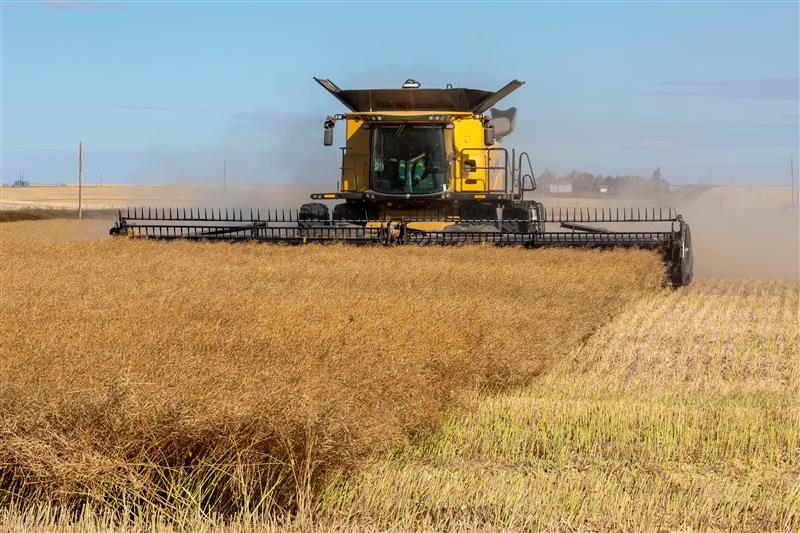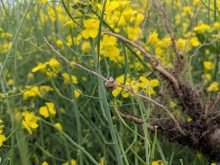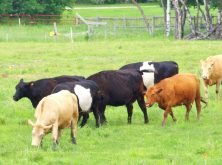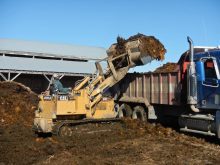Seeded acres rebound | Higher yields, greater fusarium resistance make winter wheat appealing
Winter wheat acreage is showing a comeback after two disappointing years.
Statistics Canada reports 1.34 million acres of the crop were sown in fall 2011, which is about double the 695,000 acres planted in 2010 and 650,000 acres in 2009.
“Winter wheat was a great solution for farmers who couldn’t seed this past spring,” said Paul Thoroughgood, regional agrologist with Ducks Unlimited Canada.
He is pleased seeded acreage has returned to 2006-08 levels after unco-operative fall weather kept farmers off their fields in 2009 and 2010.
“This year, I think a combination of a few things probably brought (acreage) back, one of those certainly being the large unseeded area,” said Thoroughgood.
Read Also

European wheat production makes big recovery
EU crop prospects are vastly improved, which could mean fewer canola and durum imports from Canada.
The statistics were released on the eve of the Western Canadian Crop Production Show and Crop Production Week, which run Jan. 7-14 in Saskatoon.
At Prairieland Park, where the trade show component is held, an optimistic mood circulated on the show’s opening day.
Lori Cates, agriculture manager, said for the third year running the show is sold out with 307 exhibitors, 1,002 booths and a long waiting list to get in.
The show is expected to surpass average attendance numbers of 16,500.
“I would anticipate that our attendance numbers are going to be high because of the weather and because of the optimism in the agriculture industry in Saskatchewan and the Prairies right now,” she said.
Commenting on the winter wheat statistics, Thoroughgood said last year’s excessive spring moisture left more than six million acres unplanted and many producers responded by planting winter wheat on their chemfallow. As well, plenty of acres of canola stubble were available for winter wheat because of good fall weather.
Farmers planted 580,000 acres of winter wheat in both Manitoba and Saskatchewan, while 175,000 acres were planted in Alberta.
Thoroughgood said the crop has been a particularly good performer in Manitoba, where it has avoided some of the pitfalls associated with spring wheat, such as excessive spring moisture and fusarium infection.
“Winter wheat has really been just blowing away the competing wheats as far as yield and profitability goes,” he said.
Brian Beres, a research agronomist at Agriculture Canada’s Lethbridge Research Centre, is working to improve fall stand establishment.
He is one year into a two or three year study, but the data is suggesting that seed treatments and fall application of a foliar fungicide are two ways to improve profitability.
Beres compared plots planted in the fall of 2010 with a combination of fungicide and insecticide seed treatments to plots planted with untreated seed. The treated seed produced a significant yield improvement.
“I was frankly a bit skeptical of how much gain we could get from a seed treatment, but so far it looks as though not only did it perform agronomically, but they performed economically too,” he said.
“It was a large enough yield difference that it definitely paid for the use of the seed treatment.”
The weaker the agronomic system employed, such as a low seeding rate or thin seed, the stronger the response to the seed treatment.
Beres had even less faith in a fall application of a foliar fungicide, but it was a perfect year to test the theory because stripe rust was prevalent at test sites in Melfort, Sask., Scott, Sask., and Lethbridge.
“In those three environments that fall, foliar significantly improved grain yield.”
Beres said enough data was collected across the Prairies that he is confident in the seed treatment and foliar fungicide findings despite only one crop year of research.
Thoroughgood said he needs to further investigate whether the improved vigour offered by seed treatments would allow growers to push back their seeding dates for winter wheat.
“It is pretty exciting research,” he said. “If we could push that seeding window back one more week, I think it would give a lot more growers more opportunity.”
The lack of snow cover is a big concern for growers who planted winter wheat this fall. Thoroughgood said they shouldn’t worry too much because the winter has been unusually mild.
“Despite the fact that we don’t have snow, soil temperatures have been very warm. The winterkill to date has been virtually zero,” he said.
















